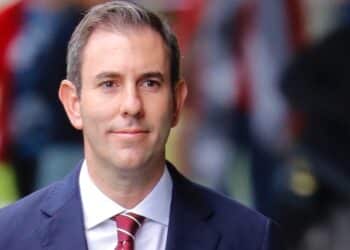The Financial Services Council’s 2019 State of the Industry review noted the number of active advisers has slightly risen since its last reporting period two years ago, up by 5 per cent to 26,793.
The FSC anticipates an upcoming decrease in the number of advisers, due to “increased regulation, new education standards, and market movements as large institutions demerge and sell their adviser groups”.
The number of advisers in large groups has declined over time, the report noted, with a slight increase of those working on their own. As at July 2019, there were 845 advisers with their own AFSL outside of an advice group, with the remaining 25,948 being with a licensee or a licensee group with other advisers.
The share of advisers in groups with more than 100 advisers was 65 per cent in late 2016, but is now recorded at 55 per cent, while the number of advisers in groups between two and 10 increased from 12 per cent to 16 per cent over the period.
The number of advisers in groups of 11 to 100 increased from 20 to 26 per cent. The number of advisers working on their own increased from 2 to 3 per cent over the three-year period.
Notably, the report cited data showing more than half of financial of financial advisers are now using ETFs, up from 8 per cent last year.
Other updates in financial services
The report, which examines financial services in Australia, found the sector contributes $161 billion, or 9 per cent of the nation’s $2 trillion economy.
About 70 per cent of the value of the financial services industry was found to be from banking and funds management (excluding super) while the remainder is from insurance, financial markets and related businesses.
The FSC also stated Australian superannuation as at 2017, gained the highest five-year returns in the developed world, with the real annual return from 2012 to 2017 being 7.5 per cent, in comparison to other markets giving an average of 3.8 per cent.
There are 10 per cent more employees in the sector than in 2017, now at 450,000.
“Financial services is the largest industry in NSW and Victoria, and enjoys one of the fastest rates of productivity growth in the national economy. Its contribution to our export economy however remains nowhere near full potential,” Sally Loane, chief executive of FSC, commented.
“More could be done to maximise the potential for financial services exports with just 5.9 per cent of services exports coming from the sector. This is well below the OECD average of 12.7 per cent.”
Locally, the industry manages a small fraction of total funds of overseas investors. The review showed 5.7 per cent of investment into Australian managed funds is sourced from offshore ($126 billion as a proportion of $2.2 trillion).
The report pointed to other countries with large funds management industries having larger proportions of funds sourced from offshore, including the UK (31 per cent sourced from offshore), Hong Kong (68.5 per cent), Singapore (80 per cent) and Luxembourg (99 per cent).
Higher tax has impacted on the attractiveness of managed funds to offshore investors, the FSC noted. It added if the competitiveness of non-resident withholding tax rates on passport funds is addressed, the Australian industry has a potential to increase funds management exports.
The Morningstar Global Fund Investor Experience Report for 2017 found Australia was the lowest ranked (least competitive) country for the taxation and regulation of funds, out of the 25 countries covered in the survey. By contrast, Australia received high rankings on a number of other measures including fees and sales experience.
Additionally, while the ratio of female to male staff in the financial services industry is approximately equal, the proportions taper off in leadership roles. The report noted only 9 per cent of chief executives in the sector are female, significantly lower than the average for all industries at 17 per cent.
In key management, 29 per cent of employees were women, slightly less than the average for all industries at 31 per cent. For board directors in financial services, 9 per cent were women, the same as the average for all industries.
The financial services sector also paid $5.8 billion in industry-specific taxes in the 2018 financial year and 34 per cent of all financial tax.
Investment and funds management
The investment and funds management sector in Australia now overlooks $3.6 trillion in FUM, rising by 28 per cent from two years ago.
Managed funds were reported to be worth $2.9 trillion, around 150 per cent of the country’s GDP.
The majority of funds with Australian investment managers (54 per cent) are sourced from superannuation funds. The FSC said superannuation has been the largest component of the industry, growing faster than GDP over the long term.
Superannuation
Australia’s superannuation system is the fourth largest in the world, behind the US, UK and Canada.
In super, there are now $2.8 trillion in funds under management, accounting for around 150 per cent of the country’s GDP and having grown by 72 per cent over the last five years. The sector’s FUM has increased by a third (33 per cent) since 2017.
The FSC noted Rice Warner research, which expects super FUM will reach $5 trillion by June 2028, or 167 per cent of projected GDP in that year. The financial consultant also forecast that super funds will own 20 per cent of all listed companies in Australia within 15 years.
Industry funds manage around 25 per cent of the sector’s total assets, overlooking $677 billion and 55 per cent of all super accounts. Retail funds on the other hand manage 22.4 per cent or $623.4 billion.
Exchange traded products
There are 194 ETPs on the market, increasing by 24 cent from 2017 and 102 per cent during the last five years. The segment’s total market capitalisation of products sits at $47.7 billion, growing by 27 per cent, and up 328 per cent over five years.
Globally, there is around $5.4 trillion invested in ETF products as of April, with the Australian market being around 0.9 per cent of that.
Passive ETFs hold a greater market share than their active counterparts, occupying 69 per cent of the number of funds and 81 per cent of total assets.
Life insurance
The number of life insurance providers has stayed steady in Australia, with there now being 29 compared with 28 in 2017. Claims paid totalled $10.5 billion, growing by 29 per cent in two years and 68 per cent over five.




[quote=BS]So RG 515 was only rolled out to the bank aligned licensees plus AMP. How will ASIC get these smaller independent licensees to demonstrate their governance of ARs providing advice? Particularly if a clip has been built into SMAs/MDAs run by them?[/quote][quote=BS]So RG 515 was only rolled out to the bank aligned licensees plus AMP. How will ASIC get these smaller independent licensees to demonstrate their governance of ARs providing advice? Particularly if a clip has been built into SMAs/MDAs run by them?[/quote]
A very good point
Vertical integration between product and sales person was highlighted by the RC. Large licensees ensure the adviser and compliance function are independent , licensees who are one and the same are unable to monitor their own behavior rationally.
So RG 515 was only rolled out to the bank aligned licensees plus AMP. How will ASIC get these smaller independent licensees to demonstrate their governance of ARs providing advice? Particularly if a clip has been built into SMAs/MDAs run by them?